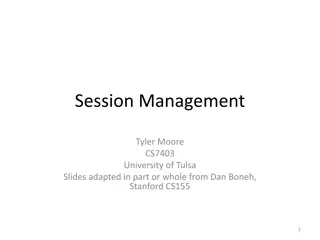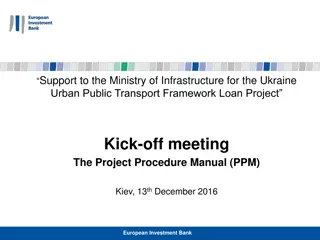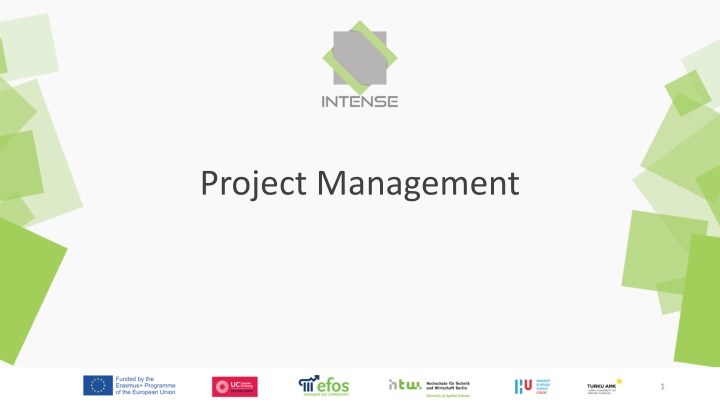
Effective Project Risk Management Strategies
Learn about project risk management through budget planning, stakeholder management, project scheduling, and risk identification. Understand the importance of defining project risks, managing uncertainties, and implementing mitigation strategies for successful project outcomes.
Download Presentation

Please find below an Image/Link to download the presentation.
The content on the website is provided AS IS for your information and personal use only. It may not be sold, licensed, or shared on other websites without obtaining consent from the author. If you encounter any issues during the download, it is possible that the publisher has removed the file from their server.
You are allowed to download the files provided on this website for personal or commercial use, subject to the condition that they are used lawfully. All files are the property of their respective owners.
The content on the website is provided AS IS for your information and personal use only. It may not be sold, licensed, or shared on other websites without obtaining consent from the author.
E N D
Presentation Transcript
Review Review - - Homework Homework Homework was to develop a budget plan for your project for the next class Exchange your budget plan with the team next to you Review the other team s budget plan and provide feedback Is the budget structured well and logical? Is it complete? Are the amounts calculated reasonable and transparent? 2
4. Planning a Project 4. Planning a Project 1. Stakeholder Management 2. Project Scheduling 3. Budget Planning 4. Risk Management 3 3
Risk Risk Management Management 4
Learning Objectives Learning Objectives After completing this chapter, you should be able to: Define project risk Recognise four key stages in project risk management and the steps necessary to manage risk Recognise four primary risk mitigation strategies 5
Risk Management Risk Management Risk Management: the art and science of identifying, analysing, and responding to risk factors throughout the life of a project and in the best interest of its objectives. Project Risk an uncertain event effect on one or more project objectives uncertain event or condition project objectives such as scope, schedule, cost, or quality. condition that, if it occurs, has a positive positive or negative negative Risk = (Probability of Event) * (Consequences of Event) Source: PMBoK. 6
Questions to Consider in Risk Management Questions to Consider in Risk Management What is likely to happen (the probability and impact)? What can be done to minimise the probability or impact of these events? What cues will signal the need for such action (i.e. what clues should I actively look for)? What are the likely outcomes of these problems and my anticipated reaction? 7
Risk vs. Amount at Stake: Challenge in Risk Management Risk vs. Amount at Stake: Challenge in Risk Management Source: Wideman (2004). 8
Four Stages of Risk Management Four Stages of Risk Management Risk identification Analysis of probability and consequences Risk mitigation strategies Control and documentation 9
Risk identification Analysis of probability and consequences Risk Types Risk Types Risk mitigation strategies Control and documentation Financial Technical Commercial Execution Contractual or legal risk Further Common Types of Risks Absenteeism Resignation Staff pulled away Time overruns Skills unavailable Ineffective training Specs incomplete Change orders Source: Pinto (2015). 10 10
Risk identification Analysis of probability and consequences Risk Factor Identification Risk Factor Identification Risk mitigation strategies Control and documentation Brainstorming meetings Expert opinion Past history Multiple (or team-based) assessments 11
Discussion Discussion Ward, S., & Chapman, C. (2003). argues that project risk management should be transferred into project uncertainty management. Would you agree? What is the difference between risk and uncertainty? 12
Risk identification Analysis of probability and consequences Risk Breakdown Structure (RBS) Risk Breakdown Structure (RBS) Risk mitigation strategies Control and documentation Low Consumer acceptance Consumer Low Profit potential External Environment Pollution risks Limited management support Organization Low funding Internal Team Missing resources 13 13
Risk identification Analysis of probability and consequences Risk Impact Matrix Risk Impact Matrix Risk mitigation strategies Control and documentation Risk (Likelihood) Impact (Consequences) Source: Pinto (2015). 14
Risk identification Analysis of probability and consequences Risk Impact Matrix Risk Impact Matrix Risk mitigation strategies Control and documentation Licensed under CC BY-NC-ND 15
Exercise Exercise Low Consumer acceptance Consumer Low Profit potential External Environment Pollution risks Volunteer Team? Limited management support Organization Low funding Internal - Risk Breakdown Structure? Team Missing resources - Risk Impact Matrix? 16
Risk identification Analysis of probability and consequences Project Risk Scoring Project Risk Scoring Risk mitigation strategies Control and documentation 1. Use project team s consensus to determine the score for each probability of failure category: e.g. Maturity (Pm), Complexity (Pc), and Dependency (Pd) Calculate overall probability 2. + + P P P = m c d P f 3 3. Use project team s consensus to determine the score for each consequence of failure category: e.g. Cost (Cc), Schedule (Cs), Reliability (Cr), and Performance (Cp) Source: Pinto (2015). 17 17
Risk identification Analysis of probability and consequences Project Risk Scoring Project Risk Scoring Risk mitigation strategies Control and documentation 4. Calculate Cfby adding the four categories and dividing by 4: + + + C C C C c s r p = C f 4 5. Calculate overall risk factor for the project: RF = + ( )( ) P C P C f f f f Rule of Thumb: Rule of Thumb: Low Risk Medium Risk RF = 0.30 to 0.70 High Risk RF > 0.70 RF < 0.30 Source: Pinto (2015). 18 18
Quiz Quiz 1. The greatest project risk occurs when: a) The probability of the event is high and the consequences of the event are high b) The probability of the event is high and the consequences of the event are low c) The probability of the event is low and the consequences of the event are high d) The probability of the event is low and the consequences of the event are low 2. A project team assigns probabilities of 0.1, 0.2, and 0.4 respectively to the maturity, complexity, and dependency categories. The probability of failure can be calculated as: a) 0.23 b) 0.33 c) 0.65 d) 0.70 19 19
Example Test Question Example Test Question Garman yawned as he sat at his kitchen table. His plans to corner the world's supply of peanut valves required detailed planning and an honest assessment of the risks involved in this highly speculative venture. He first identified the primary factors that might contribute to the project's failure. These factors were employee related, market maturity related, and health related. The best estimates he could come up with for these probabilities were 0.6, 0.2 and 0.3, respectively. The consequences of failure were less certain, but he finally decided that the cost consequences rated a 0.2, the schedule consequences rated a 0.4, the reliability consequences rated 0.1, and the company goodwill consequences were a robust 0.6. What is the overall project risk factor for this undertaking? Source: Pinto (2015). 20 20
Risk identification Analysis of probability and consequences Risk Mitigation Strategies Risk Mitigation Strategies Risk mitigation strategies Control and documentation Accept Minimise Share Transfer Contingency Reserves Task contingency Managerial contingency Insurance Other Mitigation Strategies Mentoring Cross training Control and Documentation Change management 21 21
Risk identification Analysis of probability and consequences Control & Documentation Control & Documentation Risk mitigation strategies Control and documentation Helps managers classify and codify risks, responses, and outcomes Change management report system answers: What? Who? When? Why? How? 22 22
Risk Register Register Example Risk Example Dziadosz, Agnieszka, and Mariusz Rejment. "Risk Analysis in Construction Project-Chosen Methods." Procedia Engineering 122 (2015): 258-265. 23
Homework Homework Develop a risk template including a risk impact matrix and mitigation strategies for your project in your team for next week This is the fifth tool of your project plan 24
Summary Summary Risk Management is about identifying, analysing, and responding to risk factors throughout the project cycle and in the best interest of its objectives Project Risk an uncertain event or condition that, if it occurs, has a positive or negative effect on one or more project objectives Different risk factors need to be considered when establishing a project risk template 25 25
Learning Objectives Learning Objectives After completing this chapter, you should be able to: Define project risk Recognise four key stages in project risk management and the steps necessary to manage risk Recognise four primary risk mitigation strategies 26
References References Dziadosz, Agnieszka, and Mariusz Rejment. "Risk Analysis in Construction Project-Chosen Methods." Procedia Engineering 122 (2015): 258-265. Horine, Greg (2013): Absolute Beginner s Guide to Project Management, Que Sams/Pearson Education, 3rded. Pinto, J. K. (2015): Project management. Achieving competitive advantage, Pearson Education, Harlow, Essex, 4thed. Project Management Institute (2013): A Guide to the Project Management Body of Knowledge: PMBOK(R) Guide, Project Management Institute; 5thed. Wideman, R. M. (2004). A Management Framework: For Project, Program and Portfolio Integration. Trafford Publishing. 27







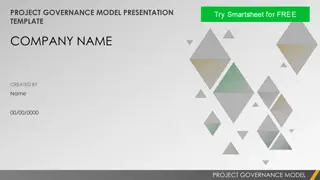
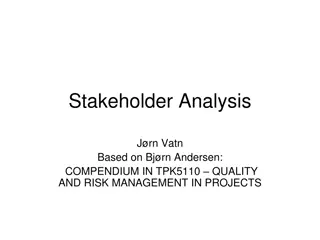

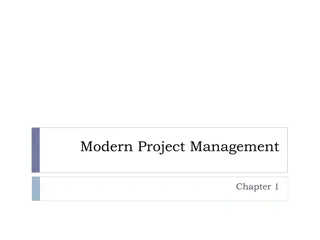


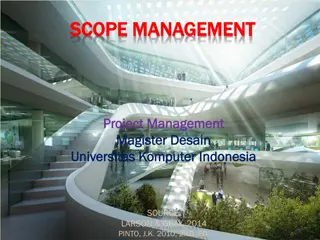


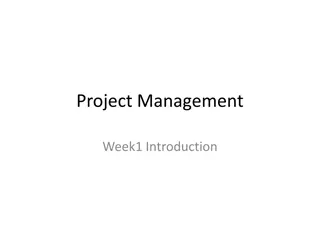

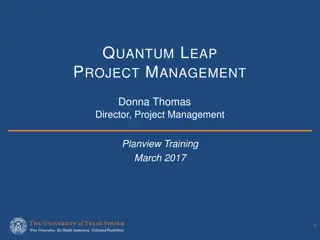
![Project Initiation Document for [Insert.Project.name] [Insert.Project.number]](/thumb/226757/project-initiation-document-for-insert-project-name-insert-project-number.jpg)
